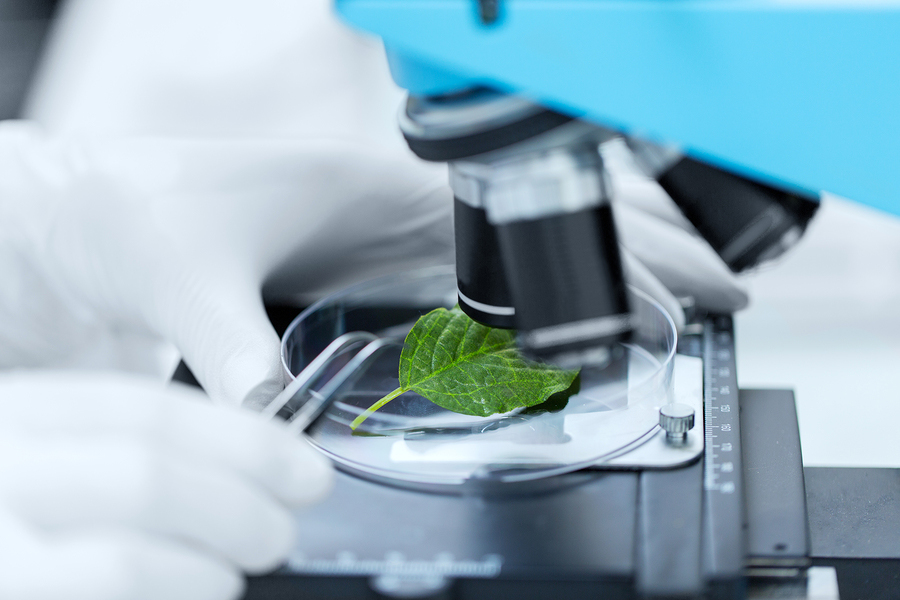America’s New National Microbiome Initiative
There’s a big new project getting underway in the scientific community. Some big name scientists have put together a massive budget in order to study some very tiny subjects. It’s the National Microbiome Initiative, and it’s the biggest tiny news of the year so far.
What’s the reason for all the hype? Well, it seems that we stand on the edge of an unprecedented era of discovery and learning about the world around us. Soil scientists have found that microorganisms there will play a key role in the future of agriculture. Ocean biologists have learned that microbes there have a huge impact on the planet’s atmosphere. And research physicians have found that our own health and happiness is heavily dependent on the microbes within our bodies.
So, it didn’t take too long for some wise soul to realize that it would be a good idea to gather all of these seemingly unrelated scientists in one lab and get them talking together.
Right Hand, Meet Left Hand
There’s a thing that happens in academic communities, where people who advance and do important work tend to get pigeonholed in to one very specific topic. Succeeding in some scientific fields means becoming a world-leading expert on a subject so specialized that you might struggle just to describe it to someone else, even to another scientist.
I recall reading a good analogy for this problem, which described our leading scientists as a world class orchestra of brilliant soloists, who are never allowed to play together.
Some visionary microbiologists recognized that the division between their specialties was limiting their collective progress, and in October they published an open proposal in the journal Science, calling for a unified microbiome initiative. The proposal’s authors include leading experts in earth sciences, neurosciences, nanomaterials, antibiotic medicine, plant pathology, genetics, pharmaceutical research, surgery, and more. They want to centralize and coordinate the research that’s currently being done independently at hundreds of different universities and research facilities around the country.
Read more: Microbes 2.0 – A Tiny Manifesto
Love Don’t Pay the Bills
The effort to find funding for the proposed UMI project was spearheaded by the White House Office of Science and Technology Policy. Associate Director Jo Handelsman coordinated a series of three workshops where he brought microbiologists together with representatives from industry and funding agencies.
When the UMI proposal was published in October, the project drew a half billion dollars in funding from various sources.
A hodgepodge of federal agencies kicked in. NASA will give $12.5 million, National Institutes of Health will give $20 million, the USDA will give $16 million… for a total of $121 million from the U.S. government. The next biggest sponsor is the Bill and Melinda Gates Foundation (yeah, I know) which is providing $100 million. $300 million more is coming from a long list of universities, non-profits, and private companies. The grand total is more than $500 million.
Rewarding Relevant Research
With a price tag like that, you can bet that the National Microbiome Initiative will have its fair share of opponents. But those numbers start to make more sense when you look at the potential for progress that this work represents.
Advancements in microbiology could very well lead to entire industries being restructured – including pharmaceuticals, agriculture, energy, and conservation. And while some scientific pursuits seem to lead us further and further from a sustainable existence on earth, this one could provide new insights into all life on earth – from the ocean to the compost pile to the human brain.
It remains to be seen if this new “super group” of scientists will use their powers for good or for evil. But for whatever it’s worth, looking through the group of microbiologists that signed the open proposal gives me the warm fuzzies. I see a young generation of scientists passionate about their work, who are already publishing important studies on antibiotic resistance, agricultural soil degradation, and the interconnectedness of life on earth.
Read more: Antimicrobial Resistance in the News
Replacing “Nukes” with “Snipers”
The new program will focus on three key goals to boost microbial research: facilitate coordination between different scientists and labs, develop new tools and procedures, and recruit new talent to the field.
One of the specific problems the initiative hopes to address is antimicrobial resistance. According to Jack Gilbert, Ph.D. – Associate Director of the Institute for Genomics and Systems Biology, professor at the University of Chicago, and one of the proposal’s authors – antibiotics are “like nukes,” and, “we want to get snipers.”
Soil and ocean microbes will also get special attention, especially regarding their roles in regulating the earth’s atmosphere.
In terms of real world applications, some of the possible outcomes of this new research include more sustainable medicines, fuels, fertilizers, and more. But hopefully the real value in this research will be to move us closer to a sustainable future where we live peacefully within, rather than in conflict with, the laws of the natural world around us.
Sources:
1: A unified initiative to harness Earth’s microbiomes. Science October 30 2015. Alivisatos, A.P., et al. http://science.sciencemag.org/content/350/6260/507
2: FACT SHEET: Announcing the National Microbiome Initiative. THE WHITE HOUSE OFFICE OF SCIENCE AND TECHNOLOGY POLICY. https://www.whitehouse.gov/sites/whitehouse.gov/files/documents/OSTP%20National%20Microbiome%20Initiative%20Fact%20Sheet.pdf
3: Hey Obama, Can We Have a Unified Microbiome Initiative? The Atlantic. http://www.theatlantic.com/science/archive/2015/10/dear-white-house-can-we-have-a-unified-microbiome-initiative/412828/
4: The White House Launches the National Microbiome Initiative. The Atlantic. http://www.theatlantic.com/science/archive/2016/05/white-house-launches-the-national-microbiome-initiative/482598/









COMMENTS(7)
LMAO. Wow, these futuristic and great thinking scientist have come up with such great ideas. The only trouble with that is they are already way behind those of us “common people” who have known about all this for most of our lives. No wonder the world is in such a mess. The people who have the power to make any changes run last in the race of intelligence, common sense and insight into the “real world.”
Not only do they run last, they are ALWAYS heavily compromised by their corrupt benefactors, dumb-ass and evil Big Industry. And Big Industry’s motivation and default/automatic agenda is the techno- and chemicals-for-temporary-profit, science-is-the-only-measure-of-excellence Planetary Extinction Level Event that we see unfolding nightmarishly all around us, presenting as a Planet in Extremis. A dying world.
Co-creative Science, where is your representative among this group?
Thank you for posting. As a 62 year old soil scientist (SSSA-CPSS) I would like to say how gratifying it is to me to learn of this development. In stride with what attracts me to permaculture, the National Microbiome Initiative (NMI) gives me great hope for the future of the community of man. Soil scientists have a huge burden of very specific but false concepts that we have in our hubris carried for 2 centuries. Soil science is now in the slow-but-inevitable process of jettisoning invalid concepts in favor of an understanding based on advanced non-destructive observational methods.
For every complex problem, there is a simple, compelling, unifying, but wrong answer. For soil science, humus as understood by humification theory has turned out to be that simple wrong answer. Prior to the recent development of non-destructive means for measuring humic substances much of our understanding of humus was defined by interpretation of destructive extractions: humin, humic acid, humates and such. I reviewed my library of a dozen college textbooks yesterday and determined that the authors seem to have anticipated the paradigm shift, distancing the text from humification theory. In my library, the word count dedicated to discussing humus in college level USA soil science textbooks declined from hundreds in the 1930s with emphasis on relative material stability, to less than a hundred in the 1980s, to a dozen words, if any, in today’s USA textbooks and no attribution of stability. The current German textbook, Scheffer/Schachtschabel Soil Science, has a high word count on the subject of humus, but not as naturally recalcitrant product of humification. It is more ecosystem and observationally based treatment of the subject, and I sense this to be the trend we will be moving to.
What we know now is that colloidal organic substances derived from plant matter are no more resistant to decomposition than are fresh plant materials. Contrary to what USA soil scientists have been teaching in college, fire-derived plant materials (charcoal) naturally accumulate in soil and these contribute significantly to soil function and soil carbon storage, Soil science based on humification theory has no conceptual framework that anticipates the natural accumulation of black carbon in soils, yet in some soils breakdown products of charcoal are the dominant component of humus. That these char-C dominated soils are the same color as charcoal should have clued us in. In North America (unlike the Ukraine), we had military and pioneer accounts of tall grass prairie burning, in terms of fire frequency, and ecosystem and soil effects. We in North America can only blame our own hubris for missing such obvious clues.
The research interest in global carbon capture and storage, and its complement, soil capture and storage of photosynthetic energy in combination with a separate interest in biochar and neolithic land management practices, these have accelerated the transition to a new humus paradigm. However biochar is ultimately going to turn out to be very small part of the revolution of ideas around a more granular understanding of the nature of soils.
We are called anew to observe and interact with soil, and specifically to focus our attention at the microbiome level. The humus resource we thought to be a naturally recalcitrant plant-derived _material_, turns out instead to be recalcitrant because 1) it is fire derived: fused aromatic carbon platelets with bits of graphene at their centers, and/or 2) humus is attached to silt and clay surfaces and/or 3) humus is protected in soil aggregates (as occurs with AMF produced glomalin) and/or 4) carbon is “entangled” within living, cooperating microbial communities, in processes that align to hold carbon as a soil community resource. My view is that microbiome community entanglement (#4) is the most important part to understand in revitalizing our planet’s soils. To many of us in permaculture, managing microbiomes involves managing plant poly-cultures well. I sense that the NMI is important to this critical effort, and I am gratified to learn of this development.
how does this relate to places like Centralia and other “burning” coal mines across the world?
Instead of getting new money from the tax payer through the Federal Government, why not use funds that have already been provided through the institutions they already work for?! The tax payer has already tapped enough!